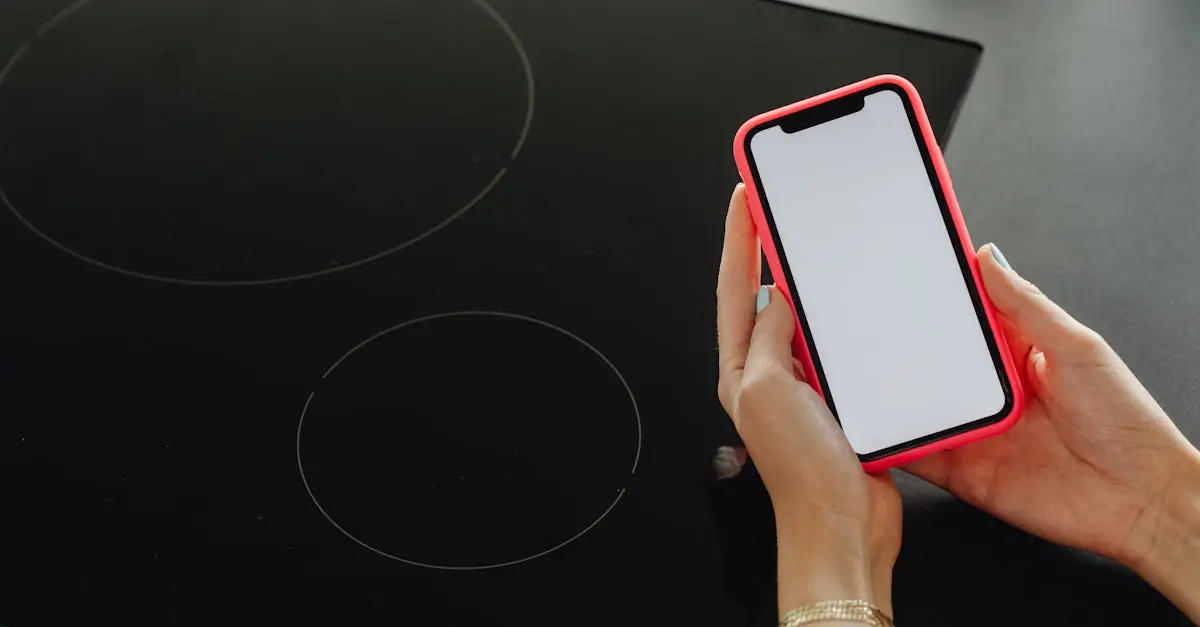Ever found yourself staring at a brand new iPhone, feeling like it’s a spaceship from another galaxy? You’re not alone. The excitement of unboxing can quickly turn into confusion, especially when it comes to setting it up. But fear not! Quick Start is here to save the day, making the transition from your old device smoother than a freshly buttered biscuit.
Table of Contents
ToggleUnderstanding Quick Start on iPhone
Quick Start streamlines the setup process for new iPhone users. It enables seamless data transfer from an old device, ensuring a rapid transition. Users appreciate the feature because it simplifies the initial configuration.
To start, both devices must run iOS 11 or later. Quick Start automatically detects the old device, prompting users to connect. A simple tap on the new iPhone activates a setup animation on the old device.
This feature can migrate several data types. Contacts, photos, and apps transfer easily, minimizing manual entry. Users also retain settings like Wi-Fi passwords, saving time and effort.
Authentication enhances the process further. Face ID or Touch ID can assist with securing the new device during setup. Data encryption keeps personal information safe throughout the transition.
Some users prefer Quick Start due to its speed. Instead of hours spent on manual migration, the feature completes transfers within minutes. Those on cellular connections can switch to Wi-Fi for faster speeds.
In cases of needing an additional setup option, iCloud backup provides an alternative. Users can restore their data without relying solely on Quick Start. The flexibility caters to various preferences and connectivity situations.
Overall, Quick Start offers an efficient, user-friendly approach to setting up a new iPhone. It reflects Apple’s commitment to improving user experience by minimizing hassle during transitions.
Prerequisites for Using Quick Start
To access Quick Start effectively, users must ensure they meet specific prerequisites. Understanding these requirements simplifies the setup process for a new iPhone.
Compatibility with iPhone Models
Supported iPhone models include the iPhone 5s and newer versions. Any iPhone produced after September 2013, like the iPhone SE or iPhone 14, successfully performs with Quick Start. Devices must be operational and functional to utilize this feature efficiently. Older models, such as the iPhone 5, are not compatible with Quick Start, limiting options for users with these devices. Ensuring device compatibility enhances the overall experience of setting up a new iPhone.
Requirement of iOS Versions
Both the new iPhone and the old device need to operate on iOS 11 or later versions. Users can check their iOS versions by navigating to Settings and selecting General. Any variations below this version restrict access to Quick Start, hindering a seamless setup experience. Keeping devices updated ensures compatibility with the latest features. For users with older versions, updating the iOS beforehand makes utilizing Quick Start feasible. Thus, maintaining up-to-date software is crucial for a smooth transition.
Step-by-Step Guide to Access Quick Start
Quick Start makes setting up a new iPhone straightforward. Follow these steps to access the feature seamlessly.
Setting Up Your Old iPhone
Ensure your old iPhone is powered on and unlocked. Hold it near your new iPhone to activate the Quick Start feature. A setup animation appears on the old device, guiding users through the process. Tap “Continue” on the old device to initiate the transfer. Keep both devices connected to Wi-Fi for optimal performance. Users must verify their identity through Face ID or Touch ID for security. This process confirms the transfer and ensures data protection. Ensure both devices have sufficient battery life to avoid interruptions during the transfer.
Configuring Your New iPhone
Start by powering on the new iPhone. Users then select “Set Up Manually” or choose the Quick Start option when prompted. The old iPhone displays a series of instructions tailored for configuration. Follow the on-screen prompts to connect to Wi-Fi and select preferences. Data transfer begins automatically once the setup is confirmed. Monitor the progress bar while the device transfers contacts, photos, and settings. Users should expect the process to complete within minutes. Personalize settings afterward, customizing features according to individual preferences for a tailored experience.
Troubleshooting Common Issues
Connecting to Quick Start sometimes presents issues. Users often face connectivity problems, which can halt the setup process.
Connectivity Problems
Wi-Fi connectivity can be a primary culprit. Both devices must connect to the same Wi-Fi network to initiate Quick Start. Users can check their network settings, ensuring the Wi-Fi is enabled and the signal is strong. In cases where connections drop, restarting the router or devices may help resolve the issue. Bluetooth must also be enabled on both iPhones for a smoother experience. If networks still prove troublesome, resetting network settings can restore original configurations.
Software Errors
Software errors occasionally disrupt the setup. Users should verify that both devices run iOS 11 or later versions. Update notifications will appear if an older iOS is detected. Restarting both devices often fixes temporary glitches during the transfer. In instances where the Quick Start feature fails to activate, users can manually navigate to the Settings app and initiate the setup. Additionally, ensuring that all software is up-to-date can minimize software-related issues during the transition.
Setting up a new iPhone doesn’t have to be a daunting task. Quick Start makes the transition effortless by allowing users to transfer data swiftly and securely. With just a few taps and the right conditions, users can enjoy a seamless setup experience.
Troubleshooting common issues ensures that even those less tech-savvy can navigate the process smoothly. Whether using Quick Start or opting for an iCloud backup, Apple provides flexible solutions to meet different needs. Embracing these tools not only simplifies the setup but also enhances the overall user experience, making it easier to dive into all the features the new device has to offer.



